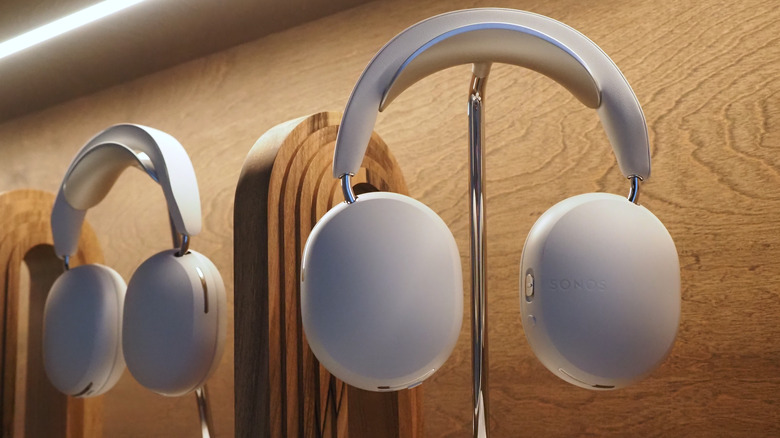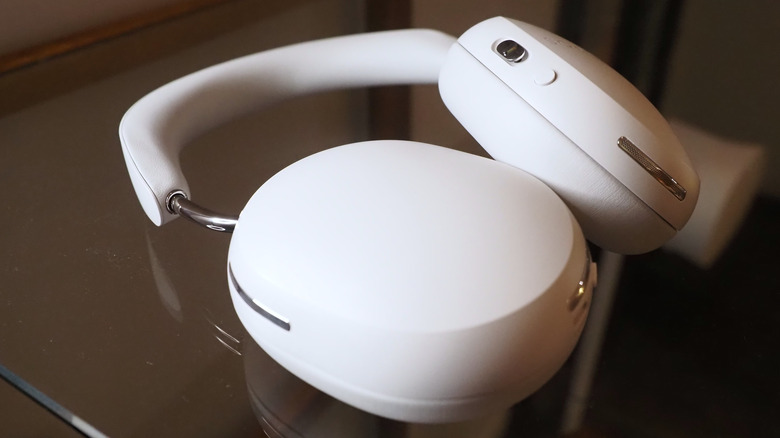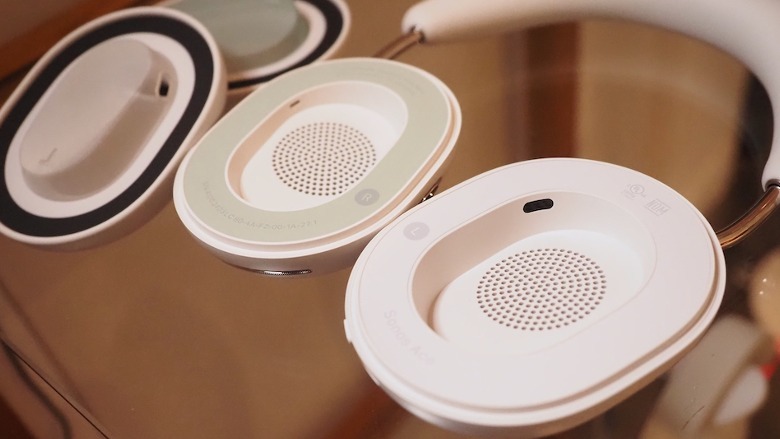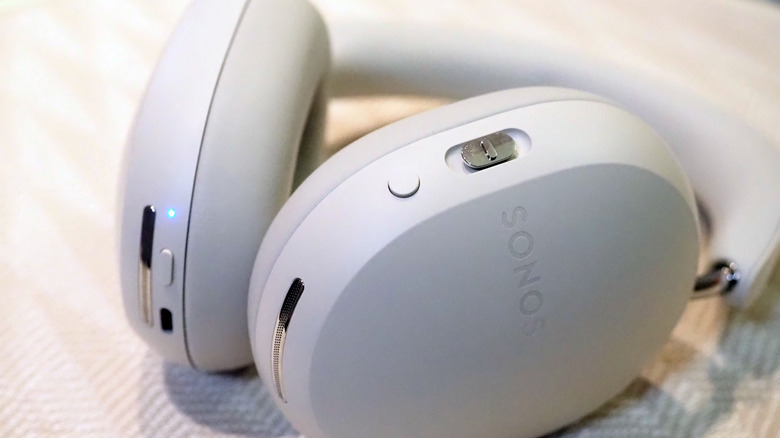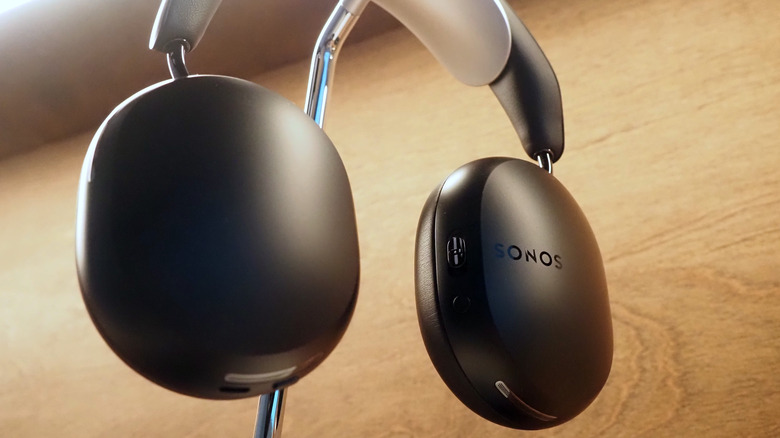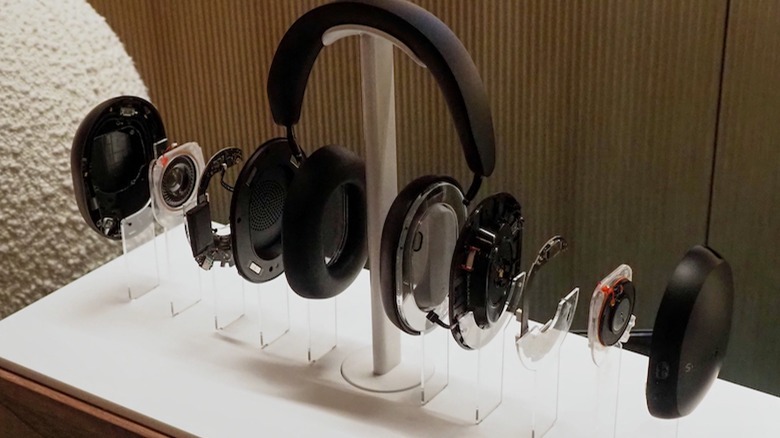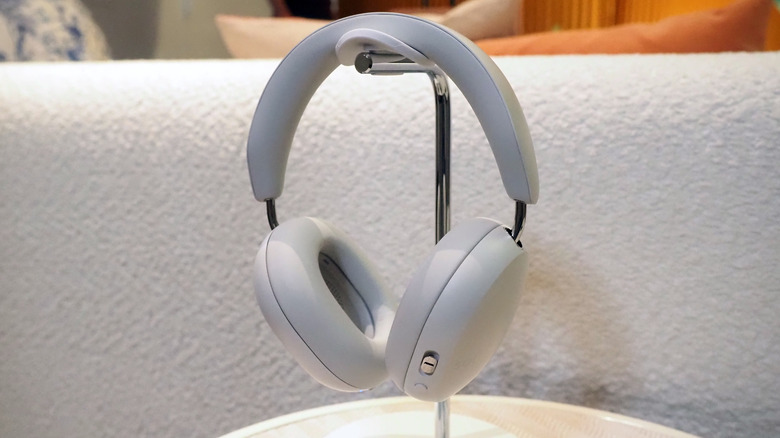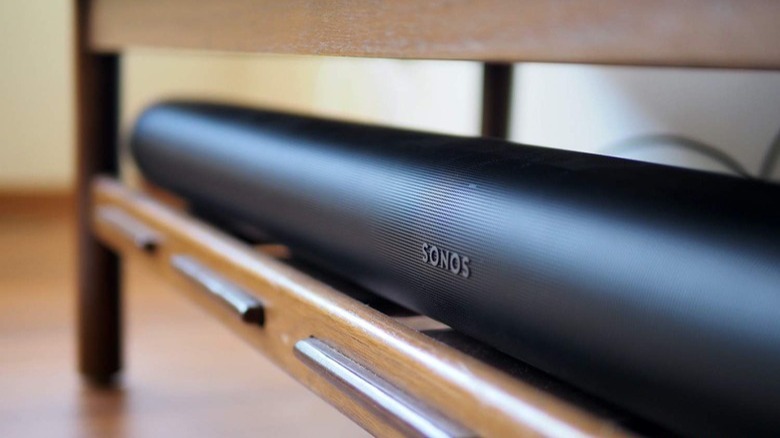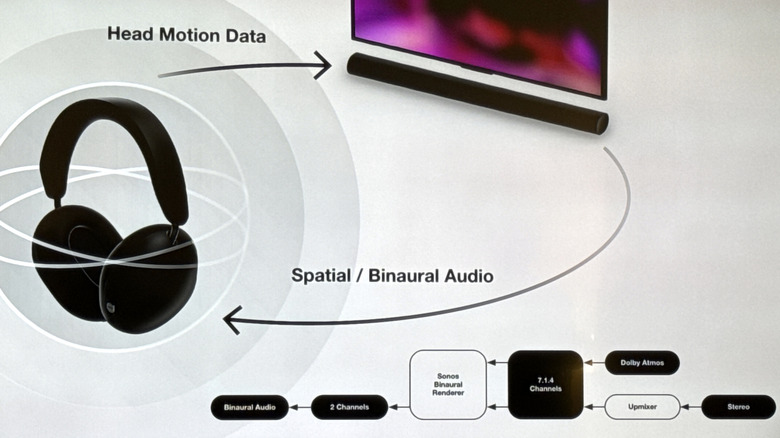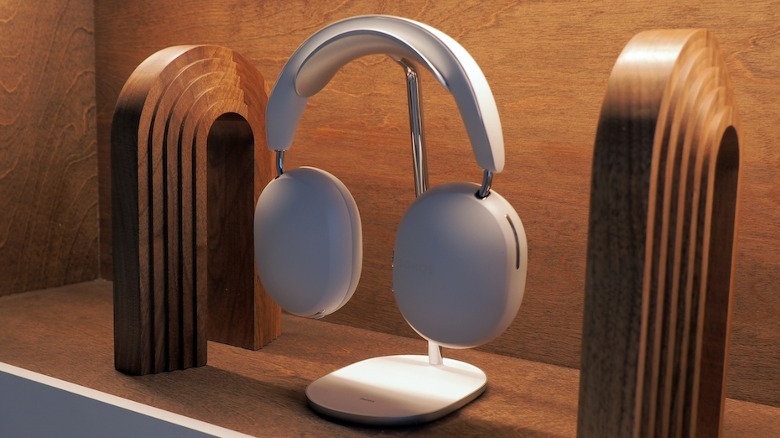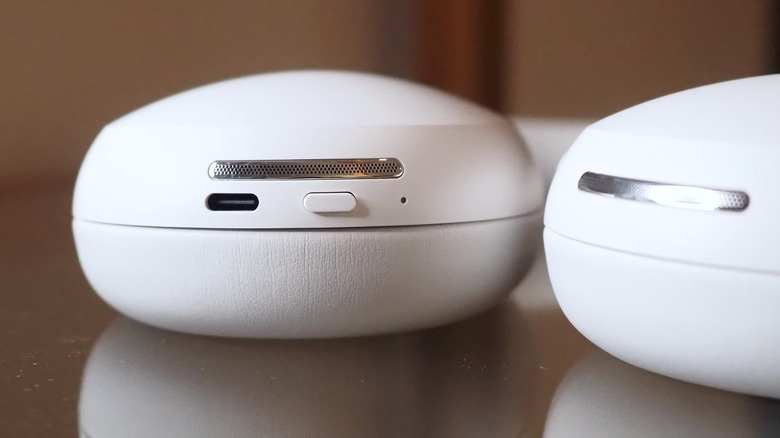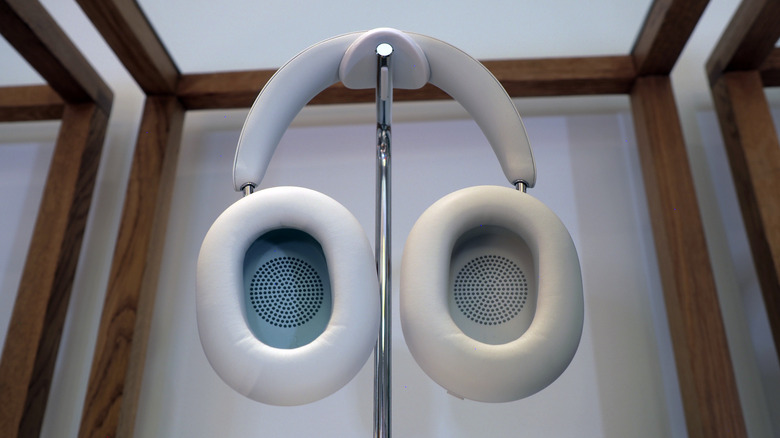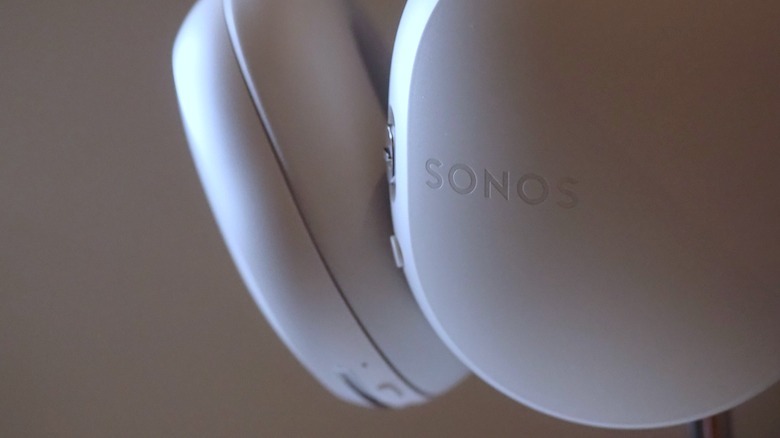Sonos Ace First Look: Does TV Audio Make These Long-Awaited Headphones Worth $449?
Sonos Ace, the company's first headphones, are here, and it's fair to say they've been a long time coming. For roughly the past three years, the company best known for its multi-room speakers and TV soundbars has been actively working on its first wearable. That, though, comes after an even longer period of Sonos fans asking for active noise-cancelling headphones.
The good thing about a frequently-demanded product is that you know you have an eager audience. The downside is that they've had plenty of time to imagine what your product should do, and that means convincing them what it eventually does do is worth the price. At $449, and given Sonos users' reputation for demanding both ease-of-use and tech-forward features, the Ace headphones face a huge challenge.
The basics are certainly there. 30 hours of battery life, with a three minute charge via USB-C good for around three hours of playback. Active noise-cancellation and head-tracking spatial audio support. Yet it's what Ace brings to the Sonos table specifically — their ability to quickly transfer audio from a Sonos TV soundbar for private listening — that'll decide whether these are the new headphones for you.
Subtly Sonos
Sonos Ace looks, and feels, like a Sonos product. Deceptively simple at first — restraint easy to mistake for indolence — but more considered as you explore. The two finishes, matte "Soft White" and Black, subtle rather than shouting; Sonos claims to have tested 26 shades of the former before settling on one it decided was "more inclusive." There's a single, laser-etched Sonos logo, more of an indicator of which way around the headphones are worn than for branding. The inner ear cups are color-coded behind the magnetically-attached cushions, for similar ease of identification.
Those cushions only magnetically cling to the correct side, too, and they're padded — along with the headband — with a Sonos-engineered memory foam. While the ear cups and band are plastic, with fingerprint and scratch-reducing coatings, they're connected with slim, polished stainless steel extending arms. Rather than the bulky external hinges many headphones use, the Ace's (which Sonos refers to as its "internal yoke mechanism") are hidden inside.
That still allows the ear cups to tilt in two directions, and Sonos says it helps with a consistent pressure and seal on and around the ear, avoids something for hair or accessories to snag on, plus ensures the headphones' low profile on your head. My opportunity for extended wear was limited, but at 312 grams the Ace are markedly lighter than Apple's metal AirPod Max (385 grams) though more than Sony's plastic WH-1000XM5 (250 grams). And, unlike the earlier-gen Sony WH-1000XM4 which are still my go-to for traveling, Sonos' headphones don't fold inward.
Physical controls trump touch
That design decision, Sonos says, was intentional — its argument is that you're not losing bulk, just repositioning it — and its included carry case (constructed from 75% recycled plastic bottles) is certainly slim. Inside, there's a magnetically-secured pouch for the bundled 3.5mm aux-in cable and the USB-C cable which works for both charging and lossless digital audio with sources like laptops.
There's no IP rating for waterproofing, though Sonos says Ace was tested for things like sweat-resistance during workouts, and while replacement ear cushions will be sold separately, the battery replacements will only be done by official service centers.
Still, better that than not supporting new batteries at all, and that's not Sonos' only decision I find myself approving of. Rather than touch-sensitive controls, Ace has physical buttons: a metal slider (the "Content Key") on the right ear cup that by default nudges up and down to adjust volume, and presses for play/pause; a button below that to toggle between ANC and "Aware" transparency modes (you can turn ANC off completely in the app) which triggers your phone's assistant when long-pressed; and a power/pairing button on the left ear cup.
They're easy to find and use, without wondering if you're tapping or swiping in the correct spot. Plus — like the six microphones with their metal grilles — they add a little more visual interest.
If you've heard a Sonos speaker, you know what you're getting
As Bluetooth headphones, Sonos Ace do much what you'd expect them to. Android devices with the recent Snapdragon Sound AptX for Lossless chipset can get lossless over Bluetooth; lossless from other devices will need the 3.5mm to USB-C cable. There's Bluetooth Multipoint support, auto-pause with head detection, and EQ controls for bass/treble/loudness in the Sonos app.
Without tweaking those, though, Ace sounds a whole lot like a Sonos product. The custom 40mm drivers may be closer to your ears than what's inside, say, an Era 300 or Move 2, but it's that same rich but transparent balance. No exaggeration of the low end, nor loss of the mids; the high end sparkles, but not exhaustingly so, or in a way that feels overweighted. Sonos fans know what they like from their speakers, and I suspect they'll be happy with how similar the new headphones sound to that.
As for spatial audio, just as we've seen on Apple AirPods Pro and other earbuds and headphones, it's a wider and more immersive soundstage. Obviously as well as a connection to a device that supports 3D audio, you'll also need a source of those files: Apple Music, Amazon Music, Tidal, and Deezer at launch.
Sonos' active noise cancellation — the algorithms for which were also developed in-house — seemed capable, though again it'll take longer testing to come to any significant conclusions. In a room with piped-in background noise, turning on ANC ousted both the hum and conversations around me, though that's arguably table-stakes for any headphones promising the tech. Especially when they cost what Sonos' do.
The Sonos TV magic
What rivals can't offer, though, is what happens when you long-press the Content Key. That automatically transfers the current TV audio from your Sonos Arc soundbar to the Ace headphones — the company is calling it "TV Audio Swap" — without pausing playback or forcing you to pick the right source in the app. Swapping from Arc to Ace and back again is almost instantaneous, with a slight dip in volume but no missed audio that I noticed.
Beaming TV audio to Bluetooth headphones isn't new, but Sonos is using a direct WiFi 5GHz connection between soundbar and Ace. That bandwidth allows it to do the clever audio processing to deliver the effect of a 3D surround sound system within the headphones, complete with head-tracking spatial audio. Sonos' own binaural engine runs on the soundbar, taking any HDMI audio input — from unmixed stereo through to Dolby Atmos — and piping that 7.1.4 sound as dynamic stereo to Ace.
The headphones, meanwhile, track head movement, and feed that data to the binaural engine. So, as you turn from the screen, the centered audio responds accordingly. If you get up and walk away — to fetch popcorn or do the dishes, maybe — it'll automatically pause that tracking process. Long-press the Content Key again, and it'll flip the audio back to the Arc.
TrueCinema works the room
Sonos speakers have Trueplay, automatically adjusting EQ to suit the room they're in; Ace will support a new system called TrueCinema. Like other headphones, Ace has a virtual acoustic model of a room on which it'll base how the spatial audio sounds. Expected to launch later in 2024, TrueCinema will run a roughly minute-long one-off calibration and replace that with a custom model for your actual TV room.
That'll take into account the position of sounds, their volume, and their depth from the screen, to make the virtualized perfect 7.1.4 sound system complete with overhead speakers. Since the model is for the room, any set of Ace headphones that connect with that soundbar will get the benefit. Or, you can turn spatial audio (and head tracking) off altogether, in the Sonos app.
You probably won't want to, though. I'm not a huge fan of spatial audio music — I find the results to be hit and miss as to whether I enjoy it or not — but surround sound for TV and movies is far more successful, to my ears. At first, as Sonos ran through its demo reel, I was a little surprised that the effect wasn't more blatant, though that lighter touch felt more understandable after longer viewing. Having the soundtrack thrown at you from all directions, even in an action movie, can quickly get tiresome.
Instead, it feels much akin to listening to an actual Sonos soundbar. For dialog-heavy content, that meant voices staying pinned centrally even as I turned. Explosions in "Dune" related to their position on-screen (or behind it) regardless of the direction I faced. Perhaps the biggest compliment is how quickly you stop noticing it all, just like how you quickly take surround sound for granted.
Some clear limits on day one
Sonos is using some fairly complex fuzzy logic to make sure you're linking to the intended soundbar. If you press the Content Key (rather than pick from a list of soundbars in the Sonos app) the headphones will scan to find the nearest Arc. It'll also prioritize a soundbar that's currently playing.
There are some pretty conspicuous limitations around the TV Audio Swap functionality at launch. Initially, it'll only work with Sonos' most expensive soundbar, the Arc, though Beam, Beam Gen 2, and Ray compatibility is planned "soon after" the headphones go on sale. Only a single home theater listener is currently supported — sorry, parents hoping to quietly watch a movie together after the kids are in bed — though, again, that's on the roadmap to address.
Similarly, like the feature's name suggests, at the moment Sonos only intends the sound swapping to work with soundbars, not its speakers. That's a software limitation, not hardware; nor a philosophical stance, as Sonos' headphone chief Chris Kallai explained to me at an event in NYC the company hosted SlashGear at.
"At this point we're launching a TV-centric connection to the home theater," Kallai said. "It's a tight, clean story. It's a clear experience for our customer base, they can understand it. And then, the world's our oyster from here forward."
Fans may be onboard, but will new users follow?
That focus, on Sonos' existing customers, will likely end up initially limiting its headphones appeal. Kallai readily agrees that Ace is a latecomer to the high-end ANC headphones space, and $449 isn't inexpensive. It puts Sonos' cans on a par with the current street price for Apple's AirPods Max, and makes them more expensive than the Sony WH-1000XM5 and Bose QuietComfort Ultra, at around $400 and $429 respectively.
Then budget $899 for an Arc, if you don't already have a Sonos soundbar, and assuming you want to use TV Audio Swap from day one. It's tough to imagine that not being the intention, too, even if from a personal audio perspective, Sonos Ace will work just like any other Bluetooth headphones.
If there's a risk, then, it's that Sonos is preaching to its choir. Where products like Roam were intended to widen the gateway to Sonos ownership, luring new users in with a more affordable, flexible speaker, part of Ace's core value proposition is as an adjunct to an (expensive) existing Sonos soundbar. Support for cheaper soundbars will alleviate that bottleneck some, but Ace's broader success will come down to convincing people its music and ANC performance outshines its established competition. Not impossible, but not easy, either.
Pre-orders for Sonos Ace begin today, with the headphones expected to ship from June 5, 2024.
